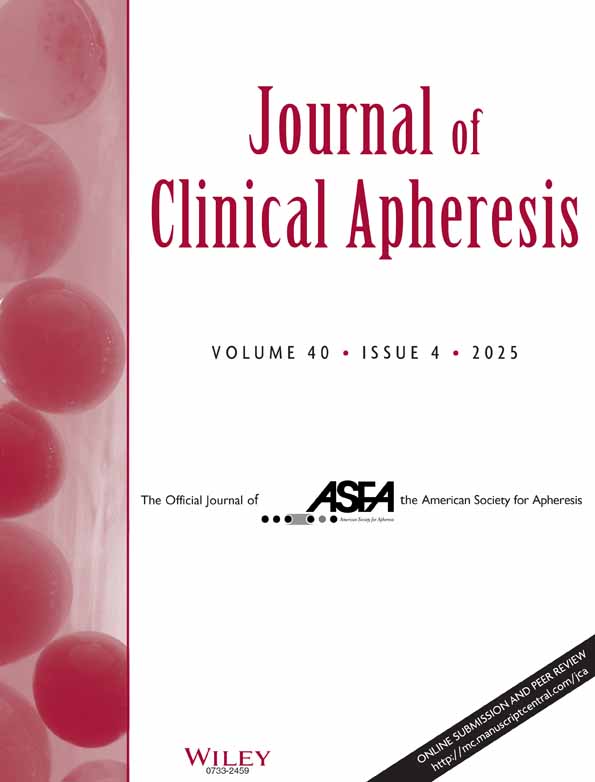Direct adsorption of low-density lipoprotein and lipoprotein(a) from whole blood: Results of the first clinical long-term multicenter study using DALI apheresis†
See Appendix for complete list of participating investigators and clinical centers.
Abstract
Direct adsorption of lipoproteins (DALI) is the first low-density lipoprotein (LDL)-apheresis technique by which atherogenic LDL and lipoprotein(a) (Lp(a)) can be selectively removed from whole blood without plasma separation. The present study was performed to evaluate the efficacy, selectivity and safety of long-term DALI apheresis. Sixty-three hypercholesterolemic coronary patients were treated by weekly DALI sessions. Initial LDL-cholesterol (C) plasma levels averaged 238 ± 87 mg/dl (range 130–681 mg/dl). On average, 34 sessions (1–45) were performed processing 1.5 patient blood volumes. The primary aim was to acutely reduce LDL-C by ≥60% per session. To this end, three different adsorber sizes could be employed, i.e., DALI 500, 750, and 1,000, which were used in 4, 73, and 23% of the 2,156 sessions, respectively. On average, 7,387 ml of blood were processed in 116 min per session. This resulted in the following mean acute changes: LDL-C 198 → 63 mg/dl (−69%), Lp(a) 86 → 32 mg/dl (−64%), triglycerides 185 → 136 mg/dl (−27%). HDL-C (−11%) and fibrinogen (−15%) were not significantly influenced. The mean long-term reduction of LDL-C was 42% compared to baseline while HDL-C slightly increased in the long run (+4%). The selectivity of LDL removal was good as recoveries of albumin, immunoglobulins, and other proteins exceeded 85%. Ninety-five percent of 2,156 sessions were completely uneventful. The most frequent adverse effects were hypotension (1.2% of sessions) and paresthesia (1.1%), which were probably due to citrate anticoagulation. Access problems had to be overcome in 1.5%, adsorber and hardware problems in 0.5% of the sessions. In this multicenter long-term study, DALI apheresis proved to be an efficient, safe, and easy procedure for extracorporeal LDL and Lp(a) elimination. J. Clin. Apheresis 17:161–169, 2002. © 2002 Wiley-Liss, Inc.




